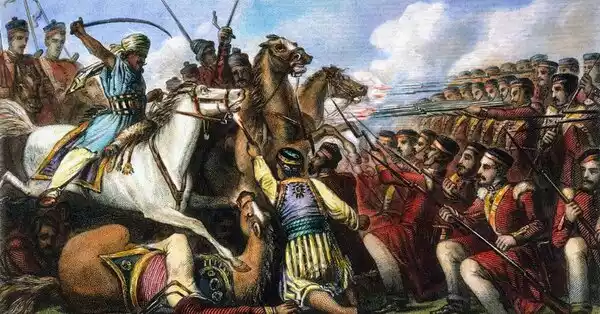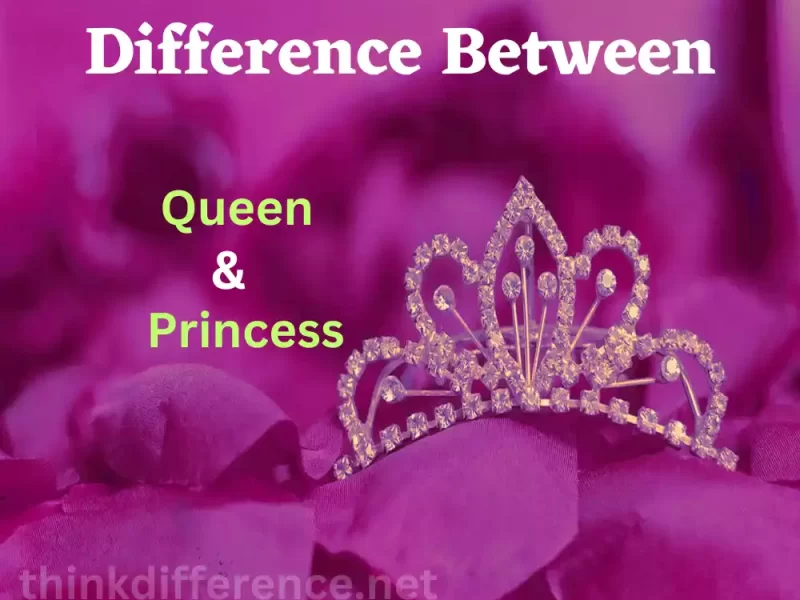Mutiny and Revolt have left an indelible mark on societies and nations, shaping destinies and ideologies. These acts of dissent and defiance have not only influenced power dynamics but have also triggered significant societal changes.
Mutiny
History of Mutiny
Mutinies have a long history, dating back centuries. They often occurred in maritime settings, such as on ships. One of the most famous mutinies is the Mutiny on the Bounty in 1789 when a group of British sailors rebelled against their oppressive captain, William Bligh, and took control of the HMS Bounty.
In the context of military history, the Indian Rebellion of 1857, also known as the Sepoy Mutiny, was a significant event. Indian soldiers (sepoys) in the British East India Company’s army mutinied against their British officers and triggered a widespread uprising against British colonial rule in India.
Mutinies have also taken place in various armed forces and organizations worldwide, driven by factors like poor conditions, mistreatment, and grievances against the leadership. While mutinies are generally limited in scope compared to larger revolts or revolutions, they have had notable impacts within their respective contexts, contributing to changes in leadership or organizational policies.
Definition of Mutiny

Mutiny is a term used to describe a rebellious act or uprising, often occurring within a military, naval, or hierarchical organization, where a group of individuals, typically members of that organization, openly and collectively disobey, resist, or challenge established authority.
Mutinies can take various forms, such as refusing to follow orders, seizing control of a ship or military unit, or actively opposing leadership, often driven by grievances, dissatisfaction, or perceived injustices within the organization. Mutineers may face disciplinary actions, but the consequences of a mutiny typically remain localized to the organization involved and do not usually result in broader societal or political change.
Revolt
History of Revolt
Revolts have been a recurring phenomenon throughout history, often sparked by societal discontent, oppression, or calls for political change.
One of the most influential revolts was the American Revolution (1775-1783), in which thirteen American colonies revolted against British colonial rule, leading to the formation of the United States of America.
The French Revolution (1789-1799) was another pivotal revolt, characterized by widespread social upheaval, calls for liberty, equality, and fraternity, and the eventual overthrow of the French monarchy.
Revolutionary movements have occurred in various countries, driven by diverse motivations, including the Russian Revolution (1917), the Chinese Communist Revolution (1949), and more recently, the Arab Spring (2010-2012), where protests and revolts erupted across the Middle East and North Africa, demanding political reforms and greater freedoms.
These revolts have often reshaped nations, altered political systems, and influenced the course of history.
Definition of Revolt

A revolt is a widespread and often violent uprising or rebellion against an established authority, government, or ruling system. It involves a collective and organized effort by a significant portion of a population or a specific group to challenge, overthrow, or resist the existing power structures, often motivated by grievances, oppression, or a desire for significant societal or political change.
Revolts can take various forms, including protests, demonstrations, armed insurrections, or acts of civil disobedience, and they may lead to the overthrow of governments, changes in leadership, or reforms in the existing system. Revolts have the potential to have far-reaching societal and political consequences, influencing the course of history in significant ways.
Comparison table of Mutiny and Revolt
Here’s a comparison table highlighting the key differences between mutiny and revolt:
| Aspect | Mutiny | Revolt |
|---|---|---|
| Definition | Organized rebellion within a specific group or organization, often military or hierarchical. | Widespread, organized uprising against established authority or government, typically involving a larger population. |
| Scope | Limited to a specific group, such as a ship’s crew or military unit. | Encompasses broader segments of society, often including civilians. |
| Objective | Typically seeks to address grievances or improve conditions within the existing structure. | Aims for profound societal or political change, often involving the overthrow of existing power structures. |
| Leadership and Organization | Often lacks a structured leadership outside of the existing hierarchy. | Can involve organized leadership and coordination, sometimes with a clear vision for the future. |
| Examples | Mutiny on the Bounty (1789), Indian Rebellion of 1857. | American Revolution (1775-1783), French Revolution (1789-1799), Arab Spring (2010-2012). |
| Impact | Generally limited to the organization where it occurs; does not necessarily lead to broader societal or political change. | Can have far-reaching societal and political consequences, potentially reshaping nations and political systems. |
| Disciplinary Actions | Mutineers often face disciplinary actions within the group or organization. | Revolts may lead to consequences for those in power, including prosecution or removal from office. |
This table provides a concise overview of the main distinctions between mutinies and revolts in terms of their scope, objectives, leadership, impact, and consequences.
Impact and Consequences
Impact and consequences differ significantly between mutinies and revolts due to their scope, objectives, and scale.
Mutinies:
- Limited Impact: Mutinies generally have a localized impact, primarily affecting the organization in which they occur, such as a ship’s crew or a military unit.
- Disciplinary Actions: Mutineers often face disciplinary actions, which can range from reprimands to courts-martial, depending on the severity of the mutiny and the policies of the organization.
- Minimal Societal or Political Change: Mutinies typically do not lead to broader societal or political changes beyond the immediate context. They are focused on addressing specific grievances or issues within the organization.
Revolts:
- Profound Societal and Political Impact: Revolts have the potential for far-reaching consequences. They can result in the overthrow of governments, changes in leadership, or reforms in the existing political and social systems.
- Widespread Societal Disruption: Revolts often disrupt the normal functioning of society, leading to protests, demonstrations, and, in some cases, violence. This disruption can have both positive and negative consequences.
- Legal and Political Ramifications: Those in power during a revolt may face legal consequences, such as prosecution for human rights abuses, or they may be forced to negotiate with the rebel groups to end the revolt.
- Historical Significance: Revolts frequently hold historical significance, shaping the course of nations and influencing the development of political ideologies and systems.
Mutinies are generally confined to the organization where they occur and focus on addressing internal issues, while revolts have a broader societal and political impact, often leading to significant changes and historical transformations.
Case Studies of Mutiny and Revolt
Here are concise case studies of a mutiny and a revolt:
Mutiny Case Study: Mutiny on the Bounty (1789)
Background: The Mutiny on the Bounty took place on the British ship HMS Bounty during a voyage to transport breadfruit plants.
Key Points:
- Mutineers: Led by Fletcher Christian, a group of sailors mutinied against Captain William Bligh.
- Grievances: The mutineers rebelled due to Bligh’s harsh discipline and oppressive conditions.
- Consequences: They seized the ship, set Bligh and loyal crew members adrift, and settled on Pitcairn Island.
Revolt Case Study: The French Revolution (1789-1799)
Background: The French Revolution was a revolutionary period in France marked by the overthrow of the monarchy.
Key Points:
- Causes: Fueled by grievances like economic inequality, Enlightenment ideas, and social unrest.
- Events: Included the storming of the Bastille, Reign of Terror, and rise of figures like Robespierre.
- Impact: Led to the end of the monarchy, radical political reforms, and influence on modern democracy.
These case studies illustrate the contrast between mutinies, which are often confined to specific groups and driven by internal issues, and revolts, which encompass broader societal upheaval with significant historical consequences.
Final Word
Mutiny and Revolt represent distinct forms of collective resistance. Mutinies, often within specific organizations, seek to address internal issues and typically have limited impacts.
Revolts, involve broader societal uprisings against established authority, with far-reaching consequences that can reshape nations and political systems. Understanding these differences is crucial for analyzing historical events and their implications.



